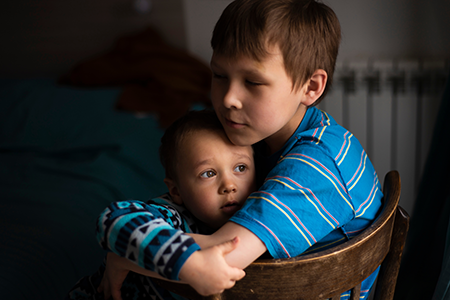The EU-SILC module on child deprivation provides information on access for children to fruit and vegetables once a day in households with dependent children aged up to 15. The indicator records whether there is access, and if not, whether this is the case because the household cannot afford it or for other reasons.
In 2021, 96.6% of children aged less than 16 who were not at risk of poverty or social exclusion (non-AROPE) had daily access to fruits and vegetables. The highest percentages could be found in Estonia, Croatia and Austria (all at 99.3%). The lowest percentages could be found in Malta (90.9%), Germany (92.2%) and Denmark (93.3%).
For children at risk of poverty or social exclusion (AROPE), the percentage in 2021 was 87.5%. The countries with the highest percentages were Austria (99.2%), Luxembourg (98.4%) and the Netherlands (98%). The lowest percentages could be found in Hungary (58.6%), Bulgaria (59.4%) and Romania (74%),
Analysis over time of daily access to fruit and vegetables
The percentage of AROPE children who had daily access to fruit and vegetables increased between 2014 and 2021. Most Member States witnessed an increase in the share of children of AROPE status with daily access to fruit and vegetables. The EU27 average increased from 83.1% in 2014 to 87.5% in 2021. Bulgaria, Estonia and Latvia recorded the biggest increases (25.7, 22.5 and 19.8 percentage points, respectively), while Sweden and Denmark recorded the biggest decreases (4.3 and 5.1 percentage points, respectively).
Regarding disparities between countries, these decreased over time. This situation can be described as upward convergence.
 Ensuring access to at least one healthy meal each school day (a broader concept than access to school meals) is one of the objectives of the European Child Guarantee. Furthermore, the Recommendation establishing the Guarantee states the need to provide access to healthy nutrition outside school days. Both aspects are dealt with together here given that some of the indicators used overlap.
Ensuring access to at least one healthy meal each school day (a broader concept than access to school meals) is one of the objectives of the European Child Guarantee. Furthermore, the Recommendation establishing the Guarantee states the need to provide access to healthy nutrition outside school days. Both aspects are dealt with together here given that some of the indicators used overlap.




